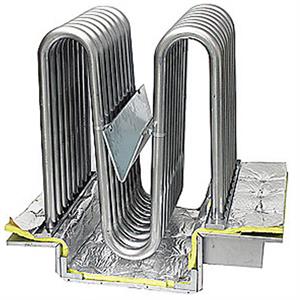Dangers of Carbon Monoxide
Aug 22nd 2017

Fall is a wonderful time of year for the vast majority of the country. The leaves start changing colors, the temperatures become cool, and Halloween, Thanksgiving, and Christmas is just around the corner. As the temperatures drop outside though, things could be changing inside your home that you should be aware of. A warm home is something that many people are able to take for granted. However, and we don’t mean to scare you or sound pessimistic, problems with your home’s heating and cooling system could potentially cause serious problems if something goes wrong. Regular maintenance should negate the majority of these worries (read our blog here to learn more about the benefits of regular seasonally maintenance on your units). In this instance the “wrong” we will talk about is if you develop cracks in the heat exchanger of your furnace leading to gases like carbon monoxide leaking into your home.
In your home if there happens to be damage to the flue pipe, which is the pipe that exhausts all of the dangerous gases from the house, or if the heat exchanger is cracked, these damages could pose serious health hazards if not taken care of immediately. These serious health hazards could include carbon monoxide poisoning. Carbon monoxide poisoning occurs after too much inhalation of carbon monoxide. Carbon monoxide is a toxic gas, but, being colorless, odorless, tasteless, and initially non-irritating, it is very difficult for people to detect. Health hazards stemming from the influence of carbon monoxide can include the following:
|
Leaks in the heat exchanger can lead to carbon monoxide gas leaking into the home. |
If there is a leak in the exhausting system then those gases can be dispersed throughout the home, and that can cause trouble. Here are some easy ways to help you detect carbon monoxide:
- Install a carbon monoxide detector in each room.
- Check the pilot lights and make sure they aren’t going out too frequently.
- If you have a fireplace, but the fire is not smoking, there may be carbon monoxide in the air.
- Check fuel-burning devices for soot accumulation.
- Make sure that no vehicles are running in closed spaces. If they are, it can build up extra carbon monoxide in the air.
- Also, have your furnace checked by a service professional on an annual basis to make sure that there are no cracks in the heat exchanger or the flue piping.
Carbon monoxide can have serious side effects if a leak is not treated diligently and promptly. An annual check of your furnace can help you keep your family safe from carbon monoxide poisoning. Having a licensed technician come out and do an annual check/tune up on the furnace can be a great way to make sure the unit is running efficiently, will run throughout the winter, and doesn’t have any leaks or cracks. During a furnace check the technician should do a combustion analyzer test, which will determine if there’s any cracks in the heat exchanger. As another added benefit, an efficient furnace will help you save money, and add to the lifespan of your unit.
Carbon monoxide poisoning is very serious, and we don’t want anyone to have to suffer because of it. We hope that this blog will help prevent most importantly, but also potentially diagnose, carbon monoxide poisoning in your home. If you notice that your heat exchanger is cracked please call your local service provider right away, as many service companies consider this an emergency. If you have any suspicion of carbon monoxide poisoning in your home, please call your local poison control center right away



